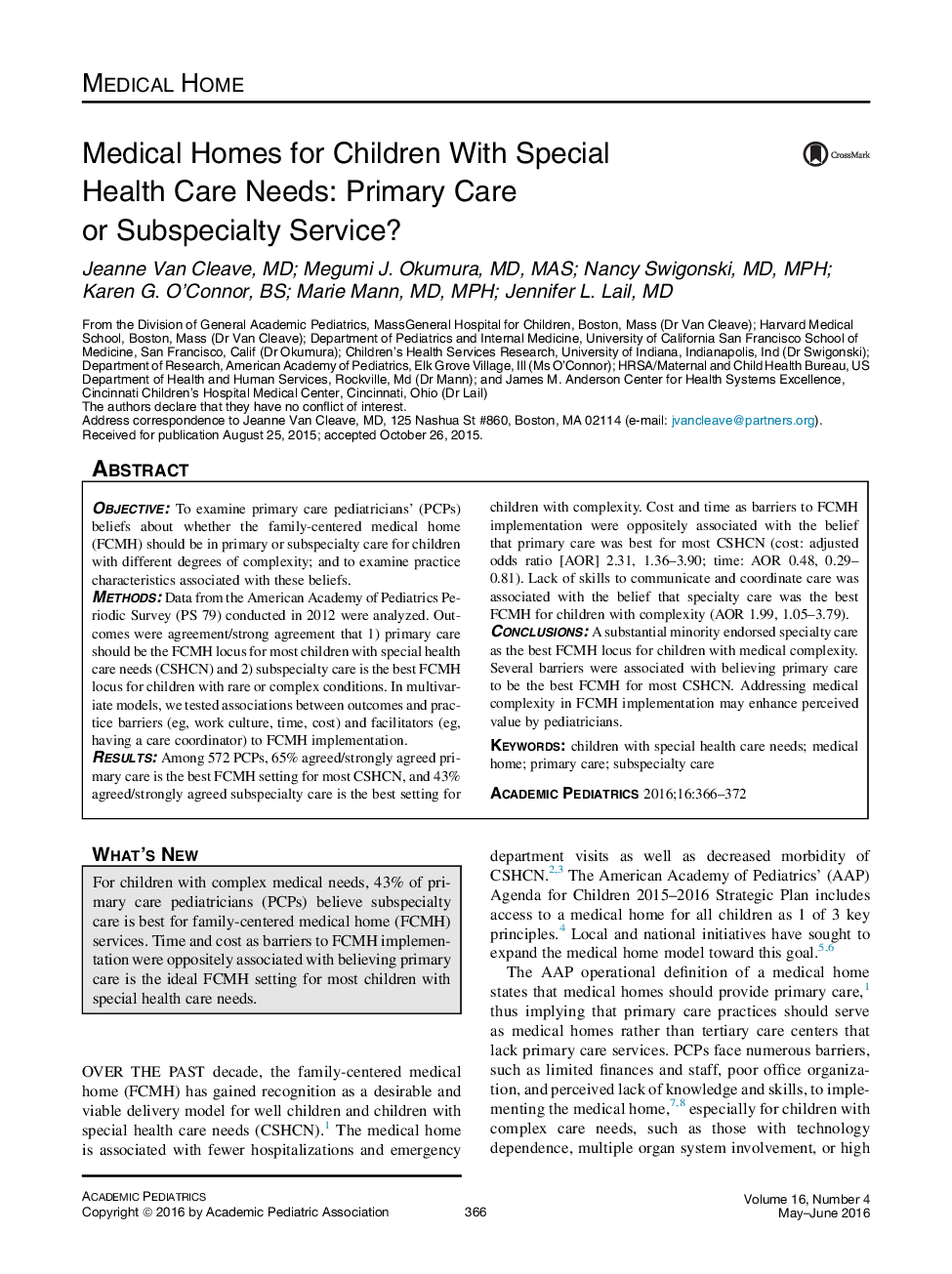| Article ID | Journal | Published Year | Pages | File Type |
|---|---|---|---|---|
| 4139179 | Academic Pediatrics | 2016 | 7 Pages |
ObjectiveTo examine primary care pediatricians' (PCPs) beliefs about whether the family-centered medical home (FCMH) should be in primary or subspecialty care for children with different degrees of complexity; and to examine practice characteristics associated with these beliefs.MethodsData from the American Academy of Pediatrics Periodic Survey (PS 79) conducted in 2012 were analyzed. Outcomes were agreement/strong agreement that 1) primary care should be the FCMH locus for most children with special health care needs (CSHCN) and 2) subspecialty care is the best FCMH locus for children with rare or complex conditions. In multivariate models, we tested associations between outcomes and practice barriers (eg, work culture, time, cost) and facilitators (eg, having a care coordinator) to FCMH implementation.ResultsAmong 572 PCPs, 65% agreed/strongly agreed primary care is the best FCMH setting for most CSHCN, and 43% agreed/strongly agreed subspecialty care is the best setting for children with complexity. Cost and time as barriers to FCMH implementation were oppositely associated with the belief that primary care was best for most CSHCN (cost: adjusted odds ratio [AOR] 2.31, 1.36–3.90; time: AOR 0.48, 0.29–0.81). Lack of skills to communicate and coordinate care was associated with the belief that specialty care was the best FCMH for children with complexity (AOR 1.99, 1.05–3.79).ConclusionsA substantial minority endorsed specialty care as the best FCMH locus for children with medical complexity. Several barriers were associated with believing primary care to be the best FCMH for most CSHCN. Addressing medical complexity in FCMH implementation may enhance perceived value by pediatricians.
